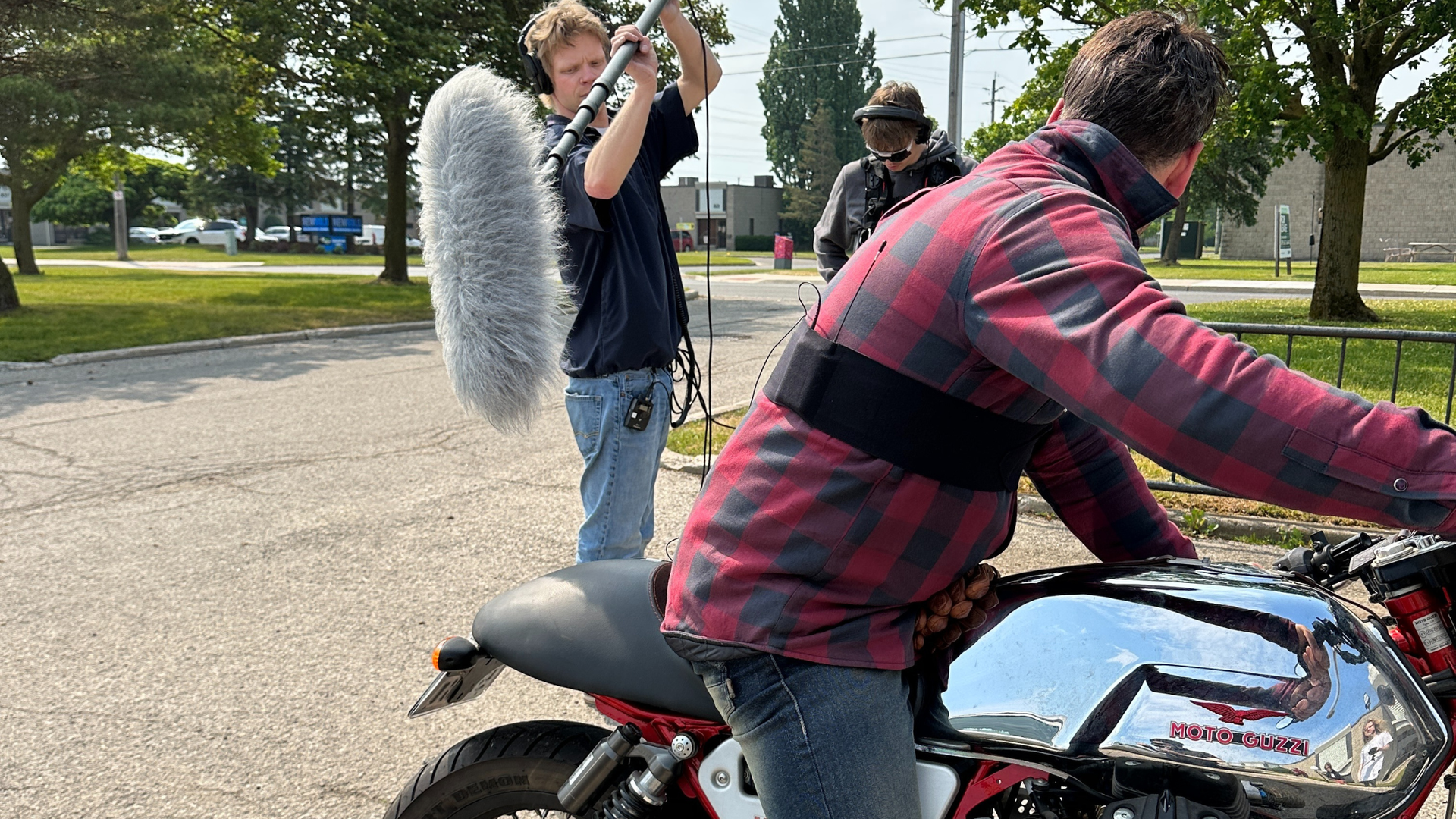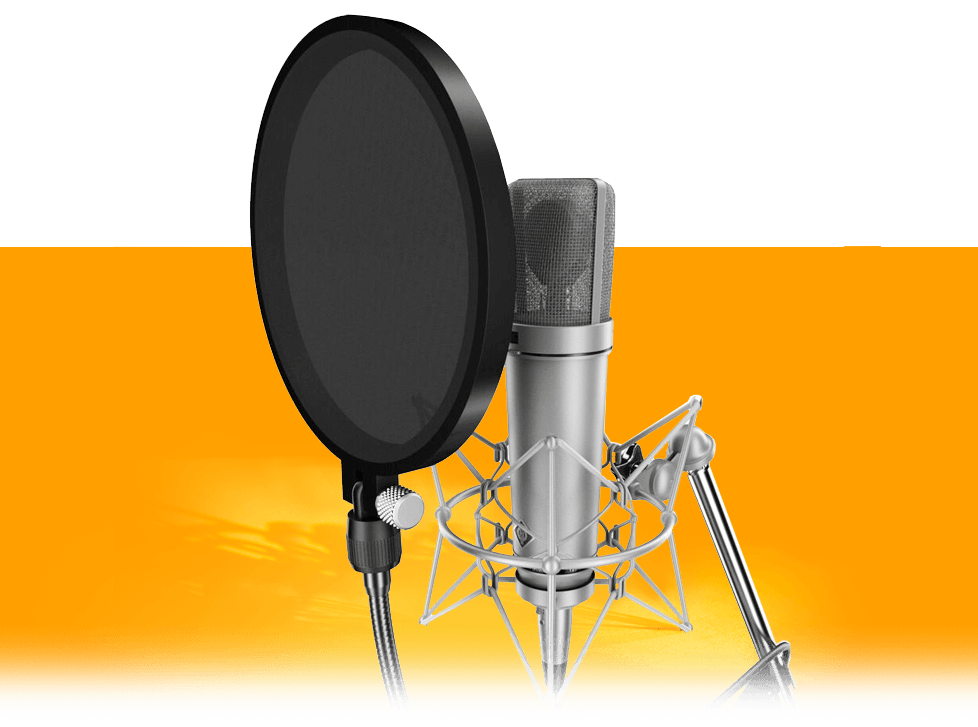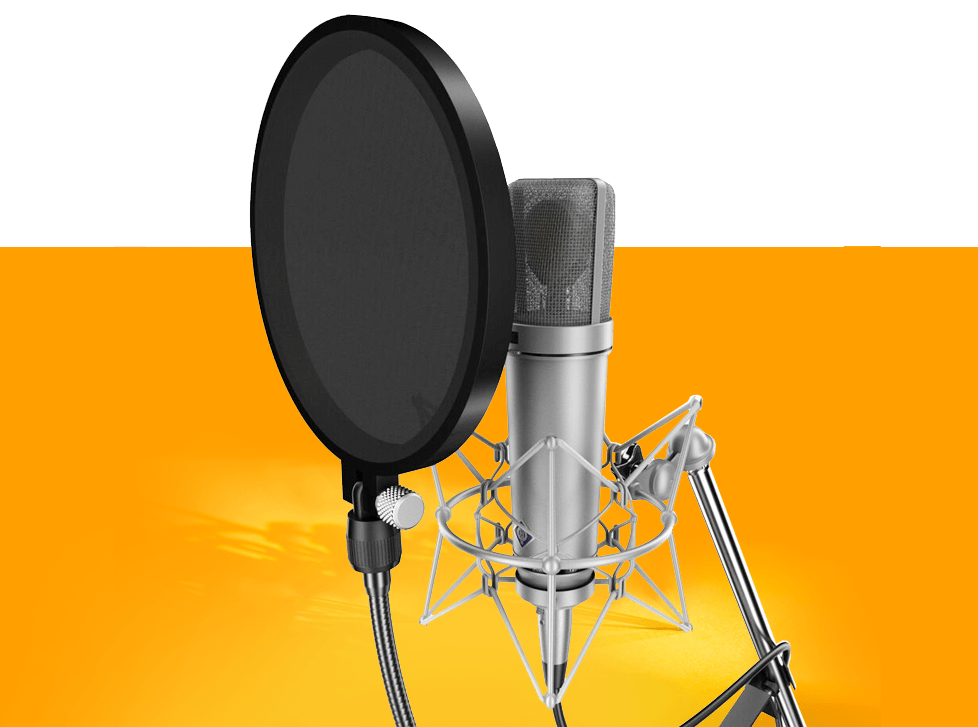Behind The Scenes: Unpacking SFX (Special Effects)
Jeremy Alves | August 18, 2025
Behind The Scenes: Unpacking SFX (Special Effects)

Explosions. Dragon wings. Sci-fi weapons.
Rainstorms, car chases, ghost whispers, and creaky doors.
What do they all have in common?
Someone created those sounds, and it wasn’t the actor holding the prop. That’s the magic of SFX audio, where storytelling lives in the details you hear.
If you’ve ever watched a movie or series and felt completely pulled in by the sound of the world around the characters, you’ve experienced the power of a great SFX editor or SFX recordist. These professionals design entire sonic environments, frame by frame.
OIART grads are doing this every day, for some of the biggest shows, films, and networks in the world. Curious what it takes to get there?
Keep reading to discover what a career in SFX audio looks like, how to prepare for it, and the sound technician courses and gear you’ll train on at OIART—Canada’s leading recording school. You’ll also hear from graduates and see some of the incredible things they’ve gone on to accomplish in the industry.
What Does an SFX Audio Creator Do?
There are two main jobs in audio SFX:
- SFX Recordist: Captures original sounds in the field or studio to build a sonic palette, including whooshes, hits, metal scrapes, animal growls, and more. They're the ears on the ground, turning real-world noise into cinematic texture.
- SFX Editor: Selects, layers, edits, and syncs those sounds with visual media using DAWs and picture reference. Their work creates the emotional impact of every footstep, explosion, or eerie silence.
Sometimes one person does both. In all cases, you’re shaping emotional impact with sound. Will the audience jump? Will they feel tension or awe? That comes down to the timing, texture, and realism of your effects.
To do this well, you’ll need to:
- Understand the science of acoustics
- Know your way around mic placement and gain staging
- Work fluently in DAWs like Pro Tools
- Sync audio to picture with frame-level precision
- Layer sounds for realism or impact
- Follow creative direction from supervisors, producers, or directors
- Help tell the story
And the demand is growing fast. With streaming content booming,
video game audio expanding, and post houses juggling multiple projects, trained SFX specialists are needed more than ever.
The Tools of the Trade: Gear, Software, and Setup
To work in SFX, your toolkit must be creative and technical. OIART’s audio engineering program exposes students to the exact tools they’ll use in the field.
Here’s some of what you’ll get hands-on time with:
Microphones
- Shotgun mics for directional recording
- Contact mics for vibration and impact
- Binaural mics for immersive stereo capture
Recording Gear
- Portable recorders for field sessions
- Boom poles, wind protection, and rigging setups
- Patch bays and signal routing for studio captures
DAWs and Software
- Pro Tools with full post-production workflows
- Soundminer or BaseHead for effects library management
- iZotope RX for noise reduction and audio repair
- Plugins for reverb, pitch shifting, and layering
Monitoring Environments
- Surround sound mixing suites
- Studio monitors tuned for detail
- Foley stages and dry rooms for capture
But gear is only part of the picture. You’ll also learn the workflow, such as how to organize sessions, tag files, build libraries, and collaborate with dialogue editors, mixers, and video editors. By the time you graduate from OIART, you’ll know how to use the tools and how to think like an SFX professional.
The Classes That Get You There
OIART’s Audio for Visual Media stream is part of an audio program designed for students who want to explore film, TV, and game audio. If your dream is to become an SFX editor, designer, or recordist, this is how our curriculum gets you there:
Post-Production Sound
- Learn how to work with dialogue, Foley, SFX, and music in one timeline
- Sync audio to picture using frame-accurate workflows
- Gain experience with file naming, versioning, and delivery formats
Foley and Field Recording
- Recreate sounds using props and custom setups
- Capture unique textures and elements to add realism
- Learn when to use studio techniques vs. field sessions
Game Audio Integration
- Understand nonlinear sound design for interactive media
- Work with middleware like Wwise to program dynamic SFX
- Study how games use sound to cue player actions and emotions
Mixing for Picture
- Balance dialogue, music, and SFX in surround formats
- Apply dynamics, EQ, and spatial tools for cinematic impact
- Learn how to deliver mixes that meet broadcast and film specs
And because all OIART students rotate through multiple disciplines, you’ll also train in studio recording,live sound, and music production, giving you a broader audio toolkit and job flexibility.
OIART's Audio Program Includes:
✓ Small Class Sizes
✓ On Site Facilities
✓ Industry Leading Instructors
✓ Post Grad Support & Guidance
✓ Exclusive 11 Month Program
Meet the Pros: OIART Grads Working in SFX
OIART grads are behind the sounds you hear in award-winning productions, from streaming hits to theatrical releases.
Wayne Lemmer: Crafting the Sound of Blockbusters
After graduating from OIART in 2003, Wayne Lemmer took his skills from small-town Ontario to the heart of Hollywood. He joined 20th Century Fox, where he has contributed sound design to major productions, including Black Swan, Fantastic Four, Transformers, X-Men, and Kung Fu Panda.
Wayne holds six Motion Picture Sound Editors Golden Reel Award nominations and continues to shape the sound of major studio films as a Supervising Sound Editor.
His original goal was music production, but once he discovered sound design, there was no turning back. OIART gave him the foundation to pursue that path, and it has taken him to the biggest stages in film.
“It just grabbed me,” Wayne said. “It engulfed my life. It was an exciting new venue for me to create and perform art.”
Roger Leavens: Building a Sound Empire in Toronto
Roger Leavens graduated from OIART in 1998 and has spent the years since carving out a name as one of Toronto’s most versatile audio professionals. He’s the founder and owner of Boombox Sound, a studio known for its creative work in advertising and television.
Boombox has created sound design and original music for many clients, including Coca-Cola, Cadbury, Ford, Greenpeace, and MuchMusic. Roger also works in music production, with album credits for artists like DIANA, Born Ruffians, and Owen Pallett.
“My education at OIART allowed me to turn my passion for music and sound into a rewarding career in music and sound.”
Jon LeBrun: From OIART to Prime-Time Soundtracks
A 2003 OIART graduate, Jon LeBrun has turned his love of audio into a dynamic career spanning music, sound design, mixing, and location recording. He runs Brown Sound Audio out of Ottawa, where his client list includes prominent names like the NHL, TSN, CTV, Discovery Channel, and TFO.
“Not to belittle other audio schools, but I have worked with people from [other programs], and let’s just say I was extremely happy with my decision to go to OIART. Something I loved about OIART is that it was intense and only 1 year.”
All three alumni show the range of possibilities in SFX: from hands-on editing to business ownership to award-winning broadcast work. And it all started with a foundation built at OIART.
What Kind of Person Thrives in SFX?
This field requires imagination. The best SFX creators are curious, meticulous, and always listening.
You might be a great fit if you:
- Obsess over how things sound in movies or games
- Love building things from scratch, layer by layer
- You thrive fine-tuning the smallest details
- Enjoy technical challenges, like syncing frames or solving noise issues
- Like working independently and as part of a bigger creative team
You don’t have to come in with every skill figured out. OIART starts at the foundation and helps you build your talent.
You’ll also thrive if you’re the kind of person who loves storytelling. Because in the end, that’s what SFX audio is: helping the audience feel something, through sound.
How to Start Your SFX Journey
If you’re serious about SFX audio, now’s the time to start building your future. Here are a few steps you can take before you even enroll:
Start Listening Critically
Watch movies or games with headphones. Ask yourself: What are you hearing in the background? Where did that sound come from?
Experiment With Sound Recording
A phone mic is enough to get started. Try recording footsteps, slams, nature, or your own sound effects.
Play With Free DAWs
GarageBand or Reaper are great entry points. Try layering sounds, adding reverb, or creating impact hits to enhance your composition. Become proficient in editing waveforms and using plugins.
Watch Behind-The-Scenes Content
Look at how they create sound for films or games. Follow studios and professionals on social media. You’ll pick up terminology, workflows, and gear knowledge.
Book a Tour at OIART
See the gear, meet the instructors, and explore the Audio for Visual Media program in person with a tour. OIART is the top-ranked audio & live sound school in Ontario, Canada — and for SFX audio pros, it’s where careers begin.
OIART Is Where Sound Comes Alive
From editing alien screams to designing the sound of spaceships or creating audio environments no one’s ever heard before, these memorable, heart-pounding experiences start here.
OIART gives you the training, mentorship, and industry-standard tools to break into post-production and make your mark in the world of sound.
Learn how to become an SFX audio professional from OIART.
Apply Today!
Ready to Start?
OIART's Audio Program Includes:
✓ Small Class Sizes
✓ On Site Facilities
✓ Industry Leading Instructors
✓ Post Grad Support & Guidance
✓ Exclusive 11 Month Program
Top Reasons Why You Should Choose OIART.
Have Questions?
If you have questions about our audio engineering and music production program or would like to book a tour, we would be pleased to speak with you.
Text Us: 519.200.4151
Share This With a Fellow Music Lover
Apply in 4 Steps!
Step 1: Click apply now.
Step 2: Answer 8 questions about yourself.
Step 3: Upload supporting documents.
Step 4: That's it! You are done.
Share this with fellow music lovers


